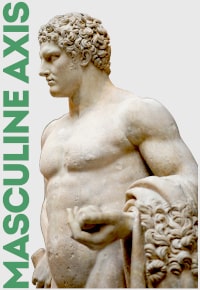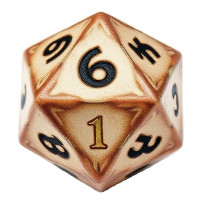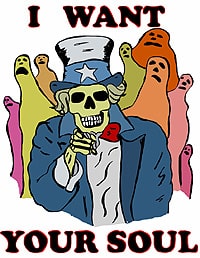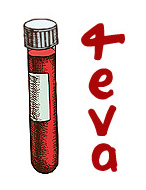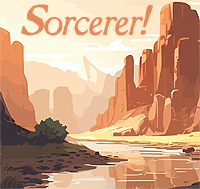“The viper may no longer hiss.”
-A German Warrior, after removing the tongue and sewing shut the mouth of a Roman Lawyer in 9 A.D., after the slaughter of Varus’ Legions
Intended as a discussion and meditation index, sub-title lists not addressed in full. This is an odd history of Arуan horse warriors, many of whom, especially Alexander, deserve an extensive treatment of their own.
I have undertaken this overview of the Arуan horse lords having never sat a horse. Not even riding a motorcycle or driving a car, I do not assume to understand the haughty feeling of mastery that must come with controlling a thousand pound beast or a machine with the power of 300 such beasts under its hood. My perspective must be of the boy who was afraid of horses, the youth who was coursed like a hair by older youths who harried me from their cars, of a stock clerk who was chased and hunted by night through the streets and alleys of Baltimore city by three different young men, in a red pickup (Belair), in a white 71 Chevelle (Greenhill), and in a yellow 72 Mustang (Belair), by five different cops in cruisers (Riverside, Harford, Belair, Fort, Loch Raven) by a pair of rednecks in a black pickup (Sefton), by three carpenters in a small green pickup [Stemmers run), by four high school jocks armed with bats in a blue Ford escort (North Boundry), by four thugs in a large sedan (Sefton), by three thugs in a two-door sedan [Eastern Avenue), and yes, by one wicked little woman in a small sedan (Belair), and a black man in a blue sedan who tried to run me over for sport in June of 2021(Taylor & Loch Raven).
How the foot soldiers of antiquity must have feared the thunder of hooves, I understand.
( ) = street/road
In the faces of all of these would-be masters of my fate I saw haughty arrogance, hate, derision and a thirst to deny me the simple freedom of two feet. As I undertake this overview I will try and recall those narrowed eyes, those aggressively confident aggressors, as they eyed me not as a rival, but as my terrier Buddy used to regard rabbits before he brought them to me with sad head dangling from broken neck.
As for the nature of horses, the character of the horseman and the relationship of the two, I have relied on:
-1. An aggregate year spent over 6 years with Bob, who grew up in a rodeo town, hunted from horseback for some 14 years, and has a severe view of the mule.
-2. Four winters walking Major Wolf’s dogs past Kenny’s mules, one of whom, Samson, stood 9 feet at the ears, and nuzzled me for treats.
-3. Sitting on Arla’s swing as she recounted the deeds of Dutch, her long gone husband who was a bull rider and horsebreaker. She once rode a bad cow, who threw her, compelling her father to kill the bovine and serve her for dinner to his darling daughter.
-4. A month spent with Paul BingHam, farrier, equine foot doctor. I attended Paul while he worked on various horses of varied breeds in Missouri, Arkansas and Oklahoma. I had the experience of handling the paper work and of watering the dogs of Ronnie, a real cowboy, at a cattle yard horse auction where he was unable to sell a certain mule. Returning at dusk to Ronnie’s ranch, I was left alone in the gathering dark with the black mule, who eyed me with bad intent, having been bullied by humans all day and now in the presence of one who feared him. Fortunately, a horny white donkey produced a stupendous erection, and in his attempted rape of the larger, darker animal, saved me from whatever the neurotic mule had in mind.
Brazen Sky
Advent: 0
Cimmerians, Jockeys, Amazons, Scythians, Slaves, Sarmatians, Getai, Isidri, Masagetai and Sacai
From 3,000 B.C. horses were raised for meat beside the rivers north of the Black and Caspian Seas. These could not be herded over open range, but were penned, being to small for men to ride.
From 2,000 B.C. horses were used to haul chariots and revolutionized war along with the composite bow. Boys would be used to ride individual horses like a donkey, seated on the butt, for round up. The small size of jockey’s to this day hearkens back to the need for a light horse wrangler. This technology appears in China, The Near East and India by 1700.
From 850 to 750 B.C. horses had become large enough for men to ride. An exodus from the river valleys of the Danube and Don as the Four Scythian Nations become fully nomadic, seems to have been triggered by an astronomical event that, according to myth, cast four brazen objects down for mankind. Not only do the tribes divide in four, but there are four castes, including Slaves, who are the grain tenders and artisans who stay behind as the free men may now herd horses across open range. It seems the legend of the amazons has the practical source of using women, who put less strain on the still small horses, to lead remounts and exchange tired mounts for their men, as illustrated on the cover of The First Horsemen, Time Life Books [?]
…
Son of God
Classical Antiquity: 1
Xenophon, Phillip & Alexander
The horsemen of Classical antiquity had no stirrups and either fired bows or threw light lances from the backs of their mounts, finally using their swords to cut down fleeing footmen or fight one another from horseback. As Xenophon became 2nd in command of the fugitive 10,000 around 400 B.C., the need to deal with mounted enemy and swarms of archers, slingers and dart throwers, resulted in converting heavy infantry in some cases into horsemen who fought like infantry, and also into missile troops who again, were better at hand to hand than the typical peltast. Xenophon describes in Horsemanship how the cornel wood spear is stronger than the traditional light horseman’s spear, with advice on padding blunt staves and sparring in the saddle.
Phillip of Macedon combined these reforms with close combat doctrine for horsemen who now fought exclusively “like infantry” close on the foe. The abandoned role of mobile missile troops was taken up by using archers and peltasts at point-blank range, taking these traditional forms of skirmishers from the flanks and drawing them across the enemy line of battle to kill men and break formations.
Alexander would develop his father’s doctrine with increased aggression and caused a combined arms military shift similar to the introduction of Blitzkrieg in WWII, granting military supremacy to Macedonians for 125 years until Rome revolutionized infantry tactics.
Terror of the World
Late Antiquity Scythian Descendants: 2
The Jujun, Huns, Heruli, Gepedi, Alans or Alani, Sciri, Tartar Peoples, and the persons, Munjuk father of Attila, Eanak, Uldin, Rugulus, Bleda, Attila and Eslaf
For 2,000 years the blond Huns preyed upon Northern and Eastern China, depopulating numerous regions repeatedly, which were restocked by their civilized foes. The main article of plunder was Chinese women. This is illustrated in Chinese poetry and tapestry and in the graves of the Royal Scythians in Siberia. There was a long period of this type of interbreeding. There also seems to have been the use of Tartar, Turkic and Mongols as allies or slaves, resulting in a sharing out of the Arуan/Scythian horse technology, similar to the relationship between the Nordics and the Finns.
By about 200 A.D. a Chinese expedition to exterminate the Huns marched into Manchuria, lost 270,000 men, raised a monument, and returned with 30,000 troops. This caused a collapse of Hun cohesion and drove them west, where they intermarried with the blond Alans or Alani. Note that the Poetic Eddas express no alien racial difference between Goths and Huns, that the tribes mixed, and that, while the name of Attila’s father was Asiatic, as well as his appearance, that the names of his uncle Regulus, an earlier Hun King Uldin, and his ambassador, Eslaf, were Germanic. Attila was recognized as overlord by the Germanic Kings, even in Sweden.
It seems that the explosion of the steppes people at this time, and the expansion of horse warfare technology across many races, had to do with a cooling cycle and the invention of the stirrup, which made horsemen more effective and more easily trained. The Huns, an entirely mongrel nation with very little social cohesion, would dwindle and disappear from history. It is my suspicion that the Huns, mixing with their successors and with disaffected Germans, became the Cossacks. Hungary would be conquered by the Avars and Magyars, the latter accounting for the modern population. I suggest the Huns were of a similar mix of Asian and European stock.
A Chinese military base was established near Alexandria the Furthest in Central Asia, from where Mango, a giant mercenary warrior, would desert to become the companion of the King of Armenia circa A.D. 300.
Wake and Ready
Chivalry: 3
Avars, Magyars, Cumin, Pechenegs, Roland, William, Timur, Soto & Gustavus Adolphus
Increasingly Asiatic horsemen, culminating with the fully purely Asiatic Mongols and Turks, would push into Eastern Europe even as Arabs and Berbers pushed into Western Europe. The terrible combat described in the Song of Roland, composed in Normandy by Teraldus, just before the life of William of Normandy, once again joined the Nordic thirst for close combat with the horse Wake and Ready, one with his heroic rider. William of Normandy developed 3-rider wedge teams for shock, scaling down and simplifying Alexander’s flying wedge and romboid formations.
Timur, who was a Tartar and an ethno-warrior, was described by his Arab slave of 20 years, who was his Chronicler as “White,” and had the most remarkable career of any horse lord who began in such poverty, with only a horse, a woman and five men, to become the most feared man on the earth, vanquisher of the Khans, Rajahs, Sultans, Kings and countless chiefs. His grandsons would found the Mogul Empire in India. He appears to have used Chinese slaves to employ explosive weapons and died of old age as he marched on China. His tactics were identical to that of Forest in America’s Civil War.
Soto slew more men on a single day with his own hand than any horseman and wiped out numerous civilizations in a four-year expedition in Florida, where he lead 240 horsemen.
Adolphus, warrior King of Sweden, “Lion of the North” perfected the combined arms team, employed leather canon, and died victorious in the saddle.
The First With the Most
Modernity: 4
Cossacks, The French Colonel, Rangers of Virginia, Kentucky & Texas 1644-1890s, Morgan, Forest, Mosby & Custer, Imbolden, Wheeler, Chalmers, Quantrill, Joe Shelby, Phil Sheridan, Custer & Crazy Horse—Turk & Russian Parallel
Cossacks would harry Napoleons beaten host from Moscow to France 30 years after a mad French cavalry colonel lit the fuse for the largest massacre of Americans in Frontier history. Mounted rangers in Virginia came into being based on a suggestion in 1622 by Captain John Smith, that cleared land would facilitate riding down savages from horseback. The 1644 Third Anglo-Powhaton War made mounted rangers the tool most used to clear the toughest tribes of the American frontier, from the Shawnee in 1813 to the Apache and Comanche at the closing of the frontier.
Mounted ranger tactics were used to such great effects by Confederate Commanders that they became the model, along with the Mongols, for German War Studies ultimately resulting in Blitzkrieg doctrine.
These tactics would be answered by cavalry Army tactics of Sheridan and imitated by Crazy Horse at the Fetterman Massacre and the Little Big Horn against Custer. Crazy Horse was said to have blue eyes, possibly a white mother, and used a Winchester, his men armed with much better shoulder fired guns than Custer’s cheap carbines with copper casing that jammed. Ironically, a decade later, a Turkish riders armed with Winchesters sold by America inflicted heavy losses on a Russian force armed with obsolete weapons. To crown this, in 1944, when a Cossack force allied to Germany, of some 20,000, made a fighting winter retreat through Austria to surrender to the Allies, tracing the invasion rout of Attila, American commanders turned them over to the Soviets to be executed and sent to Siberian gulags.
Notes
-0. By the Wine Dark Sea, The Sons of Arуas, The Beasts of Arуas, LaFond, Histories by Hedodotus, The Horse by Strong, 1933
-1. Xenophon Horsemanship, Anabasis, Arrian’s Alexander Anabasis, Alexander of Macedon by Harold Lamb
-2. Edward Gibbon, The History of the Decline and Fall of the Roman Empire, Chapter 34, Poetic Eddas, Jackson Crawford
-3. The Song of Roland by Teraldus the Norman, The Crusades by Harold Lamb, Tamerlane, Conqueror of the World, Harold Lamb, Paradise Lost by Milton, Hernan De Soto, Savage Quest in the Americas by Duncan, The Conquest of New Spain by Bernal Diaz, The Thirty Years War by C.V. Edgewood, The Devil’s Horsemen by Chambers
-4. A Sorrow in the Heart by Allen B. Eckert, A Battle From the Start, Brian Steel Wills, Bust Hell Wide Open [?], Crazy Horse by Mari Sandoz, The Devil Knows How To Ride (Quantrill)[?], Mosby’s Rangers [?], The Civil War by Shelby Foote



